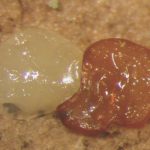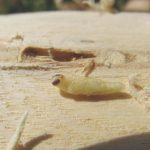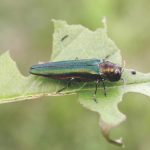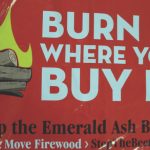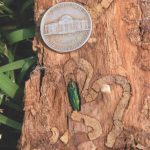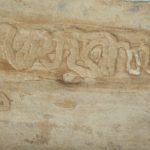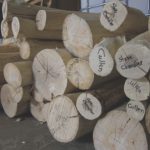Emerald Ash Borer
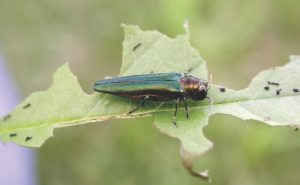
This kit serves to educate youth about the threats of invasive species, such as the star of our newest toolkit: the Emerald Ash Borer beetle, an invasive species from Asia. Activities cover themes such as how to determine if an ash tree on your property is being attacked by an Emerald Ash Borer, and how to report/treat such in incidence, as well as broader themes, such as biodiversity. Youth will be able to act out their own mock town hall meeting, and will learn the cultural importance of the sacred Ash tree to Native American populations across Maine.
Are you interested in learning more about what the University of Maine and UMaine system campuses offer?
The University of Maine offers over 100 academic majors! To learn more either:
Visit UMaine’s Find a Major.
Explore our other campuses here.
If you need help connecting to UMaine or one of the other UMaine System campuses, contact us by email or call (207) 581-3877 and ask for Laura, Greg, or Sarah!
Contact 4-HScience@maine.edu to reserve a toolkit.
Video: Tree ID (YouTube)
Curriculum Activities
Activity 1: Biodiversity Basics

Objectives:
At the end of this activity youth should be able to:
- Explain what biodiversity means, why it is important, and what could threaten it.
Time to complete activity: 60 minutes
Background/Setting the Stage:
Use questions to get youth thinking about biodiversity:
- Ask them to think about what they had for lunch (or breakfast). Get the youth to commit to agreeing or disagreeing with the following remark: “I think everything you ate came from plants.”
- Who ate plants in their lunch? Discuss.
- What is something you ate that did not come from a plant? Discuss.
- Get the group to discuss how meat and dairy products come from plants in an indirect way.
- Is there anything you could eat that doesn’t come from plants?
- Where does a plant get its energy? Do a quick review of photosynthesis: plants are made of mostly water (H2O) and carbon dioxide (CO2), with some nutrients extracted from the soil. The sun powers this process (definition of photosynthesis, below).
Materials:
- index cards
- Biodiversity worksheet (in visuals folder)
- tape
- twine
- laminated copies of food webs (or internet access and laptops)
Methods
Activity 1: Biodiversity “20 Questions” (20-30 minutes)
- Hand out the Biodiversity Worksheet (see visuals folder). Using the worksheet as a guide, facilitate a question and answer session with youth, as a way of introducing key vocabulary related to biodiversity (i.e., consumer, decomposer, predator, prey, etc.).
- Once youth have been introduced to key vocabulary, pass out one index card to each participant with the name of an organism written on it. (One organism per card. Examples are below.) Place the cards face down in front of the youth so that the names of species cannot be seen. Instruct them that they must not look at the species name on their own cards. Then, at the count of three, youth will flip their cards up to their foreheads, so that they cannot see their own organism, but can see those of others.
- Working with partners, youth will take turns asking each other a series of “yes or no” questions in order to deduce the name of their organism. For example, they might ask whether their organism is a producer, consumer, predator, prey, mammal, reptile, insect, plant, etc. [Note: The facilitator may wish to model this with the youth.]
- Youth continue asking questions until they have figured out what species is written on their card.
Examples for index cards:
| Honey Bee | Ant | Oak Tree | Squirrel |
| Mushroom | Spider | Snake | Deer |
| Mouse | Woodpecker | Frog | Ash Tree |
| Earthworm | Butterfly | Snail | Robin |
| Grass | Flower | Hawk | Fly |
Activity 2: Web of Life (20-30 minutes)
- When everyone has figured out what they are, they will gather in a circle (taking their organism cards with them).
- All these organisms are connected within a food web. We are going to model this with a ball of yarn.
- When you get the ball of yarn, toss it to someone holding a card with which your organism has a relationship. Encourage youth to describe this relationship using the vocabulary introduced at the beginning of the activity.
- Each person should get the ball of yarn at least once. You should end with a web of yarn that models the interactions between the organisms.
- What if one of these species were not here? Ask one participant to tug at the yarn. Then ask those who felt that tug to raise their hands. Then have the people who felt that tug pull on the yarn. Now have all who felt that tug raise their hands.
Discuss the word interdependence. Ask what would happen if one species in this ecosystem were to go extinct. Who would it affect? What if a new species were introduced to this ecosystem? Who would it affect?
Reflection Questions (Journal or Discussion)
- What are some ways that organisms in an ecosystem are interdependent? (5-LS2-1, MS-LS2-2)
- Where does the energy in a food web come from? Where does the matter in a food web come from? (5-LS1-1, MS-LS2-3, MS-LS1-6)
- How does a decrease in biodiversity destabilize the ecosystem? (MS-LS2-2)
- What species was introduced that caused the decrease in biodiversity?
Supplemental Information:
- Black Ash Swamp (Department of Agriculture, Conservation and Forestry, Maine Natural Areas Program, Maine.gov website)
- Learn more about photosynthesis on the Illuminating Photosynthesis page (PBS website)
Vocabulary:
- Producer: organisms that use the sun’s energy to produce food
- Consumer: organisms that cannot make their own food
- Decomposer: organisms that get energy by breaking down dead plants and animals
- Photosynthesis: the process by which plants use sunlight to convert water and carbon dioxide into glucose and oxygen
- Food web: a group of organisms organized in predator and prey relationships
- Interdependence: when members of a group are all dependent upon each other
- Biodiversity: the degree of variation of species within a certain area
- Matter: the material of which something is made
Activity 2: How to Tell If It’s EAB

Objectives:
Before youth can understand the impact the emerald ash borer will have on the State of Maine, they should be able to identify this invasive species and know how it affects ash trees.
By the end of this activity, youth will be able to:
- identify the characteristics of an insect
- identify the Emerald Ash Borer (EAB)
- identify an EAB-infected ash tree
Time to complete activity: 60 minutes
Background/Setting the Stage:
Use questions to get youth thinking about insects and the EAB:
- Are all insects harmful? Can you name some insects that help the environment?
- What does it mean to be an invasive species?
- Have you heard of the emerald ash borer or EAB?
- Why do you think the emerald ash borer is considered invasive?
- What tree is it killing?
- Why might it be important to know what an emerald ash borer is, or what it looks like?
Materials:
- Emerald Ash Borer kit from Michigan State University (to show group)
- 6″ metric/English ruler
- copies of a basic guide to insects
- sets of laminated Emerald Ash Borer images (included in visuals folder)
- laminated copies of EAB Signs and Damage pictures on the Cooperative Agricultural Pest Survey (CAPS)/Emerald Ash Borer (EAB), Agrilus planipennis page (Department of Agriculture, Conservation and Forestry, Maine.gov)
- EAB Identification data sheet
- Image: Emerald Ash Borer Look-Alikes (University of Nebraska-Lincoln Extension)
- individual laminated copies of EAB look-alikes (the “suspects”)
- data sheet: The Line-Up
Methods
Activity 1: Identify the Emerald Ash Borer (20-30 minutes)
- In their groups, have youth use the insect guide to answer the following questions (which should be written on the board):
- What are the two main groups of insects?
- What are some identifying characteristics of insects? (List these on the whiteboard)
- In the insect guide, find the section on beetles. Is the emerald ash borer in this booklet? Why not? Discuss the concept of an invasive species. Tell the story of how EAB got to the United States in wooden packing material from Asia.
- In their groups, have youth look at the images of the emerald ash borer as well as the signs and symptoms of an infected tree. Have them look closely at the photos of EAB and trees that have been attacked by EAB, and then complete the EAB identification data sheet. (Either distribute laminated copies of signs and damage pictures or project them on the board.)
Activity 2: The Line-Up (20-30 minutes)
- Put the “suspect” pictures on the front table.
- Instruct pairs of youth to take one picture at a time to fill out the Line-Up sheet.
- While youth are collecting data, wander around to help with any questions that arise.
- Discuss as a group who the “suspects” are, and which is the EAB.
- As a follow-up to this activity, distribute one EAB look-alike sheet to each youth. Compare the various insects on the sheet. What do the borers have in common? How are they similar/different from the beetles?
Activity 3: Life Cycle (15 minutes)
- What is a life cycle? Have youth think of an example. Go through the example: a butterfly lays eggs, the eggs hatch into caterpillars, the caterpillars eat and pupate, and then out comes a butterfly.
- Now ask the youth to consider the human life cycle. Through what stages do humans pass?
- Now, look at the EAB life cycle. (Pass out the visual.)
- How is the EAB life cycle similar to a butterfly life cycle? How is the EAB life cycle different from a butterfly life cycle?
- During what season do EABs reproduce? When do their eggs hatch?
- At which stage of life does the EAB damage the tree? Which stage of life is the longest?
Reflection Questions (Journal or Discussion)
- How do you know that the emerald ash borer is an insect? (MS-LS1-1, MS-LS1-3)
- How would you describe the emerald ash borer to someone who has never seen it before?
- What would you tell them to look for if they wanted to know if their ash trees were infested?
- Why is the EAB our “culprit” and not the other “suspects?”
- What stage of life is the most damaging to the ash trees? (MS-LS1-5; Review: 3-LS1-1)
Supplemental Information:
- Information about EAB: Pest Alert, Emerald Ash Borer, United States Department of Agriculture, Forest Service, State and Private Forestry Northeastern Area (PDF)
- Insect and tree identifications:
- Image: Emerald Ash Borer Look-Alikes (University of Nebraska-Lincoln Extension)
- Cooperative Agricultural Pest Survey (CAPS)/Is it an Ash Tree? page (Department of Agriculture, Conservation and Forestry, Maine.gov)
- Information about epicormic branches found on the School of Forest Resources and Environmental Science page (Michigan Tech website)
- All sites for images are included with the image.
- Eggs. Photo: Debbie Miller/USFS, Bugwood.org
- Pupae and chamber in white ash. Photo: Kenneth R. Law/USDA APHIS PPQ, Bugwood.org
- Adult. Photo: Debbie Miller/USFS, Bugwood.org
Vocabulary:
- Tapered body: narrowing body
- Epicormic branching: bud clusters found on the stem or trunk of a tree (see photo included with visuals)
- Invasive species: a species that is introduced and out-competes many of the native species so that it changes the biodiversity of the ecosystem
- Native species: a species naturally found in a specified geographical area
- Larva: the immature, wingless, feeding stage of an insect
- Pupa: the non-feeding, immobile, transitional stage between larvae and adult.
Activity 3: Where Is EAB and How Is It Spreading?
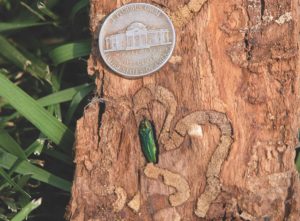
A range map shows the general area where an organism is found. Ranges for most species change slowly enough that a range can be published in a book and used reliably for decades. The emerald ash borer is an invasive species and is, therefore, expanding its range faster than any native species. It is doing this with help from humans.
Objectives:
By the end of this activity, youth should be able to understand what a range map is and how quickly EAB is expanding its range.
Time to complete activity: 60 minutes
Background/Setting the Stage:
Ask youth the following questions for discussion:
- Where did the emerald ash borer come from?
- How did it get here?
- Where in the United States did it first land?
- How fast is it spreading?
- How is it spreading?
Materials:
- images of range maps for various species
- copies of the EAB range from 2004-2013 (in visuals folder)
- chalk
- two to three decks of cards
Methods
Activity 1: Range Maps (15 minutes)
What is a range map?
- Pass out the “species range map” cards to the youth. The organism on each card is different, and each has its own range map.
- Ask youth what species they have and where it can be found. Guide them in using the range map, if necessary.
- Have each youth share the northern and southern boundary state or province of their species. This can be done in partners, groups, or the whole group, depending on time and number of youth.
- Ask the youth, “Do range maps ever change?” Have them discuss this with a partner or group. Then discuss it as a whole group. (The answer is yes, but very gradually, although you could discuss how climate change is speeding up this process.)
EAB range:
- Now show them the “range map” of EAB for 2004. Ask them if they think this range map has changed since then.
- Then show them the “range map” of EAB for 2013. Compare the difference, and emphasize that this has happened in 9 years.
- Create groups and pass out a map from each of the years from 2004 to 2013. Have the youth count the number of states/provinces in which EAB was found that year. (Map quality varies, use whichever ones work best for you.)
- On a whiteboard or chart paper, graph this together with the year on the x-axis and number of states/provinces on the y-axis.
- Ask youth to predict what will happen this year. Discuss.
Activity 2: Hitchhikers (45 minutes)
Handshake game:
- Ask the youth how the common cold spreads. Discuss.
- Have youth close their eyes and put their heads down. Now gently tap one on the shoulder. He or she has the cold virus.
- In the first round, each youth finds one person with whom to shake hands. (Note: Inform youth that in each round they may only shake hands with one other person.)
- The youth with the virus secretly taps the hand of the person with whom he shakes hands. This is done with his first finger, and if you want extra clarity he can tap twice. (You might want to demonstrate how to shake hands as if you were “it.” The secret handshake must be clear, yet discrete.)
- Tell youth that if they get tapped during a handshake, they now have the virus. In the next rounds, they will spread the virus to whoever shakes their hand.
- By the start of the second round, two youth will have the virus. By the start of the third round, four youth will have it. If you have 16 or more youth, do four rounds. If you have a smaller number of participants, you can do two or three rounds.
- After all the rounds, ask the youth to predict how many people will be infected (could be up to 16).
- Find out how many were actually infected. Discuss.
- What could you have done to avoid getting infected? Do you think EAB spreads like a virus? How does Lyme disease spread? Discuss the word “vector.” Is there a vector for EAB? Can it spread on its own?
Do the math:
- Adults emerge in June and are alive for two to three weeks. In that time they eat leaves and find a place to mate and lay eggs. According to scientists, EAB adults are strong fliers, but most only fly short distances (about 1/2 mile). However, individuals are capable of flying “several miles” to infest new trees.
- If several means ten miles, how far from Detroit would they have gotten in the 16 (or so) years it has been in North America?
- Look at the 2013 map from Activity 1. Which states/provinces would the EAB have gotten to on its own?
- Compare this with how far it has spread since it was first discovered in 2002. How did they spread so far? Elicit ideas from the youth, and help them think of nurseries and firewood, if necessary. Let them know that it is believed they originally came from China in pallets infected with EAB.
Map it:
- Using chalk or dry-erase markers, draw a large map of the United States on the board. Put a big star in the approximate position of Detroit. This is where we begin. Remind youth that EAB came from China to Detroit sometime in the 1990s, and was discovered in 2002.
- Shuffle two decks of cards.
- Tell youth that for this game we are going to pretend that we all live near Detroit and that we plan to go camping somewhere in the U.S. Before leaving, we load our truck with firewood from the backyard. Now call on a volunteer and ask him/her to pick a place on the map to go camping. Give the volunteer 10 cards to represent the firewood he/she brought to the campsite.
- Send 10 youth out to “go camping” in different parts of the country. Depending on how many youth you have, you could use more or less.
- After all are in their respective camping places, tell them that anyone with an ace has brought EAB with them in their firewood. Have them raise their hands if they have aces.
- Ask what will happen now. If EAB finds ash trees, it may establish a population in this new place. How fast can it spread from there? (Several miles a year on its own)
Reflection Questions (Journal or Discussion)
- Could the emerald ash borer be in Maine right now?
- How could it have gotten here? Do we usually think of humans as vectors for disease?
- Predict what the 2016 EAB range map will look like. (MS-LS2-1)
- If we want to prevent the spread of EAB, what can we do? How will this help? (MS-LS1-5)
Supplemental Information:
- Life cycle information: Plant Pest and Disease Programs page (USDA website)
- Emerald Ash Borer, The Green Menace brochure (PDF)
- Emerald Ash Borer: Coping with the Costs, the Economic, Social and Environmental Impacts of Invasive Insects on our Communities (PDF) (USDA, U.S. Forest Service website)
- Extensions:
- Make posters to educate people about EAB.
- Write letters to your state representatives to have flyers handed out to everyone passing through Maine tollbooths.
- Research how other states have attempted to educate their public about EAB.
- Photo: Kenneth R. Law/USDA APHIS PPQ, Bugwood.org
- Photo: Eric R. Day/Virginia Tech., Bugwood.org
Vocabulary:
- Range: the geographical area within which a species can be found
- Vector: any agent that carries and transmits a disease or pest to another living organism
Activity 4: Ash Tree Range and Forest Survey
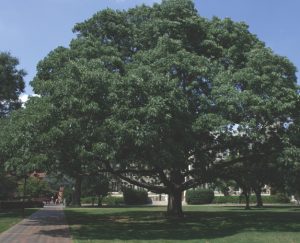
Since the EAB only attacks ash species, it is important to know the range of ash species in North America. It is also important to know how to identify ash trees so that youth may assess what percentage of their local landscape will be affected by EAB.
Objectives:
By the end of this activity, youth should be able to understand where ash trees live and how to identify them.
Time to complete activity: 120 minutes
Background/Setting the Stage:
Review questions:
- Where did the emerald ash borer come from?
- How did it get here?
- What makes it an invasive species?
Video: Tree ID (YouTube)
Materials:
- range map of ash trees in North America (in visuals folder)
- general guides to trees
- a copy of Forest Trees of Maine, published by Maine Forest Service, Maine Department of Agriculture, Conservation and Forestry and available online, Forest Trees of Maine
Centennial Edition – 1908 to 2008 (Maine Department of Agriculture, Conservation and Forestry, Maine.gov website) - trundles (or tape measures, for smaller sites)
- data sheets
- clipboards
- flagging tape
Methods
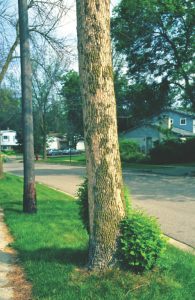
Activity 1: Ash Tree Range and ID (30 minutes)
Preparation:
- Go to the area where the youth will be surveying. Ideally, it will have ash trees. Do a quick survey before bringing the youth to the survey area to find out what are the dominant tree species. (Use Forest Trees of Maine as a resource if necessary.) You will use these trees to create the data table.
- Pick some leaves and twigs from each of these trees and bring them back to the investigation area, or wherever youth will be meeting for the activity.
With youth:
- Show youth the range map of ash tree species in North America. Also, notice where EAB has been found (red dots) and the location of the federal quarantine (blue line). Ask the youth where they think the EAB could eventually spread to. Point out that it spread from one city in Michigan to all the states with red dots in approximately 15 years.
- Hand out to each pair of youth the leaves collected from local trees as well as a general guide to trees.
- Together, walk them through the first part of the dichotomous key in tree guide: needles versus broad leaves, alternate versus opposite branching, and compound versus simple leaves.
- Have pairs key-out their tree species using the book. Walk around to coach when necessary.
- Once they have figured out which species they have, each pair should share their species and the evidence they examined to arrive at this conclusion. Youth should fill out the tree ID sheet as groups share their findings. You may decide to skip the fruit or leaves section, depending on the season.
- What traits do you look at to tell apart the tree species?
Activity 2: Woodlot Survey (90 minutes)
Tree survey:
- Do you think there are any ash trees in the woods by our school (or wherever you will be doing the survey)? Do you think they comprise most of the forest? Half the forest? A small part of the forest?
- Delineate the area to be surveyed. You can measure it beforehand or have the youth measure the area. If the youth measure it, make sure it is a simple shape. Compare the size of your survey area with an acre (4,840 square yards, 43,560 square feet, or about 4,047 square meters) so that when you figure out the percentage of trees species, you can multiply to get a “per acre” value.
- Create a data table (with or without the youth) that contains the major species in your woodlot and a way to name the section that each pair of youth surveys. (See example below)
| Area number | Red maple | White cedar | Brown ash | Yellow Birch | Other |
|---|---|---|---|---|---|
| 1 | |||||
| 2 | |||||
| 3 | |||||
| 4 | |||||
| Total | |||||
| Total per acre | |||||
| Percentage of forest |
- Use flagging tape to mark boundaries of the survey area as well as the areas for which the youth will be responsible.
- Have each pair of youth make tally marks for all the trees on the data table. To make things easier, you can make a rule that the tree must be at least 12 inches in circumference to be counted.
- Youth will need to refer to their Tree ID sheet to identify the trees. It will be helpful for them to have the tree guide as well.
- After all of the groups have finished, total the numbers for each tree species.
- Then have the youth multiply to get a per acre value. (For example, if you surveyed 0.25 acres, then multiply by 4.)
- To get a percentage, have the youth add up all the totals. Then have groups of youth find percentages by dividing the number of one species by the total found. Do this for each species.
- What percentage of the trees in our woodlot are ash trees? What do you think the woods would look like without these trees? How will this affect the forest?
Reflection Questions (Journal or Discussion)
- How can you tell if a tree is an ash tree?
- What kind of impact do you think EAB will have on this woodlot? Give evidence to support your answer. (MS-LS2-1)
Supplemental Information:
-
Emerald Ash Borer: Coping with the Costs, the Economic, Social and Environmental Impacts of Invasive Insects on our Communities (PDF) (USDA, U.S. Forest Service website)
-
Species ID Cards page (Vital Signs website)
-
Extensions:
- Find out how many ash trees are in the State of Maine. Use the USFS link below to help. Compare this to other states.
- Find out if any citizen scientists have found EAB in Maine and posted it to Vital Signs; go to the Vital Signs website and “explore data.” Click on “change search,” and select Emerald Ash Borer in the species line.
- Use the Vital Signs website program as a tool for recording places where you have looked for evidence of EAB. You can also take on a “mission” at this site. It is well worth looking into teacher workshops at the Gulf of Maine Research Institute for help using Vital Signs.
Vocabulary:
- Needle leaf tree: a tree with needle-shaped leaves, such as pines, spruces, tamaracks, and firs
- Broadleaf tree: a tree with wide, flat leaves, such as maples, oaks, birches, and ashes
- Opposite branching: the arrangement of leaves directly across from one another on a twig
- Alternate branching: the arrangement of leaves not opposite on sides of twig
- Compound leaves: a leaf composed of small leaf units or leaflets
- Simple leaves: a leaf composed of a single blade
- Acre: a unit of area equaling 43,560 square feet (a little smaller than a football field)
Activity 5: Money Talks

Emerald Ash Borer is not just a threat to the ash trees in Maine; it is also a threat to Maine’s economy. This potential threat will affect the state, town municipalities, local businesses, and homeowners.
Objectives:
By the end of this activity, youth should understand the economic effect that EAB could have on any town in Maine.
Time to complete activity: 60 minutes
Background/Setting the Stage:
Play the first four minutes of the emerald ash borer control video, below (from the EAB Infested Trees page of the Emerald Ash Borer Information Network website), to help youth understand the massive economic effect of this insect:
Video:
Ask the following questions:
- How will towns, parks, and private homes be affected by EAB?
- What if the emerald ash borer attacks the ash trees in our town? How much will it cost?
Materials:
- LCD projector
- laptop
- Activity 5: Money Talks, Ash Tree Inventory form (PDF)
- tape measure
- a general guide to trees
- clipboards
- calculator
Methods
Activity 1: Ash Tree Inventory
Tell youth that their job is to do an inventory of ash trees in parks and other municipal areas. Let them know that they will be using this inventory to estimate the economic hardship that EAB may have on their town’s people. (This could be a service project for your town if you first communicate with your local government. See the Extensions below.)
- Find an online copy of a map of your town and show it to the whole group using an LCD projector.
- Highlight the key public areas of town, such as schools, parks, libraries, and downtown. (Priority areas will depend on the size of your town and the size of your group.) Assign teams to a specific section to inventory ash trees. If the youth will be completing this at another time, you can give them areas that they live close to.
- Remind youth of the specific characteristics of an ash tree and what an infected tree may look like. Tell them they need to make close observations to see if there are any signs of EAB in the area.
- An important piece of data that they need to collect is the circumference of each tree trunk. Tell them that this information will be important when calculating the cost. (You may need to review circumference and diameter with the group.)
- Give each team a clipboard with two copies of the Activity 5: Money Talks, Ash Tree Inventory form (PDF), a general guide to trees, and measuring tape for measuring the circumference of the ash tree’s trunk. Explain that this measurement should be taken about four feet from the base of the tree.
- Have one youth sketch a rough map of the area so that they can record where their trees were found. They can correlate a number on the map with a number on the inventory sheet.
- Go over the inventory form and tell youth the “diameter” and “cost” columns will be completed in a π group after they take the inventory. For this assignment, they only need to complete the first four columns: identify the ash tree, give a reason why they know it is an ash tree, look for EAB signs, and then measure its circumference.
Activity 2: The Bottom Line. Do the Math. (45 minutes)
- Have youth get into the same groups they had for the Ash Tree Inventory and pull out their ash tree inventory sheets.
- Hand out a calculator to each group.
- Tell youth they must first find the diameter of each tree and record it on the inventory sheet. At this time you may want to go over how to find the diameter when you know the circumference: d=C/π
- Once youth have the diameter in inches, they need to multiply this number by $8 to find the average cost per year to treat that particular tree. (Cost of treating a tree depends on several things and ranges from 7-16 dollars per inch of trunk diameter. For this exercise we will use $8 as the average cost.)
- Let youth know that if a tree shows extensive damage, treatment is not an option. It must be removed.
- Have youth add up the total cost of treatment for their area and record it on the board so that you can get a total treatment cost for the town.
- Get a total count of all the ash trees, and have youth multiply this by $400, the cost to remove and replace a tree. (If you wish, call a local tree removal service and get a quote for removing or treating trees in your area.) Compare the cost of treatment versus the cost of removal. Let them know that the cost of treatment is a yearly cost, while the removal cost is a one-time cost.
- Then have a group discussion. How much will this cost the town taxpayers? Would this money already be in the town’s budget? Why or why not? Discuss the pros and cons of treatment versus removal.
- Our survey covered municipal areas, but there may be many private homes with ash trees as well. How is EAB going to affect homeowners with ash trees?
Reflection Questions (Journal or Discussion)
- If and when EAB makes it to our town, how heavily will our town be impacted? (Youth could present this information to the town government if you are doing a service project.) (3-5-ETS1-2, MS-ETS1-1)
Supplemental Information:
- Insecticide Options for Protecting Ash Trees from Emerald Ash Borer fact sheet (PDF) (North Central IPM Center)
- Emerald Ash Borer Control video from the EAB Infested Trees page (Emerald Ash Borer Information Network website)
Video:
- Emerald Ash Borer Municipal Initiative (Indiana Arborist Association website)
- Extensions:
- Work with the local government to have youth do a tree inventory for the town. Have youth use their cell phones as GPS units to find waypoints of ash trees in their town. Youth could also download the ESRI app for their iPhones or iPads to create their own maps.
- Have youth research a town of similar size that has already been affected by EAB. (This could be a “sister city” if you have one in an EAB-affected area.) What are they doing with their trees? What has it cost them?
- Research the different treatment chemicals and compare them in terms of cost and public health. Use the Emerald Ash Borer Municipal Initiative site below to help with this extension.
- Research industries that are dependent on ash trees (furniture, sports equipment, tools, basket makers, firewood, logging). How will these industries be affected by EAB?
Vocabulary:
Insecticide: pesticide used against insects, used to kill all stages in an insect’s life cycle.
Diameter (d): The distance across a circle through the center
Circumference (C): The distance around a circle where C = π x d
Pi (π): The ratio of a circumference of a circle to its diameter (3.14)
Activity 6: The Sacred Ash Tree
 The Wabanaki culture of Maine is intimately tied to brown ash trees. Their creation story is tightly linked to the ash tree. Wabanaki baskets are made exclusively of brown ash, which they call the “basket tree.” The Emerald Ash Borer has the potential to erase an integral aspect of the Wabanaki culture.
The Wabanaki culture of Maine is intimately tied to brown ash trees. Their creation story is tightly linked to the ash tree. Wabanaki baskets are made exclusively of brown ash, which they call the “basket tree.” The Emerald Ash Borer has the potential to erase an integral aspect of the Wabanaki culture.
Objectives:
By the end of this activity, youth should be able to understand the cultural and economic impact the Emerald Ash Borer will have on the Wabanaki Tribes of Maine.
Time to complete activity: 90 minutes
Background/Setting the Stage:
Write these words on the board: family, family traditions or customs, values, and beliefs. Take a few minutes to talk about these words, and then read Kunu’s Basket: A Story From Indian Island by Lee DeCora Francis (ISBN-13: 978-0884483304)
(Optional) You may want to read the following excerpt from a Passamaquoddy legend to reemphasize the importance of the ash tree to the Wabanaki people:
“Glooskap came first of all into this country, into Nova Scotia, Maine, Canada, into the land of the Wabanaki, next to sunrise. There were no Indians here then…firstborn were the Mikumwess, the Oonahgemessuk, the small Elves, little men, dwellers in rocks. Then in this way, he made Man: He took his bow and arrows and shot at trees, the basket-trees, the Ash. Then Indians came out of the bark of the Ash-trees.”
— How Glooskap made the Elves and Fairies, and then Man of an Ash Tree, and last of all, Beasts, and of his Coming at the Last Day (Internet Sacred Text Archive website)
Materials:
- LCD projector
- laptop
- website
- paper
- pencil
Methods
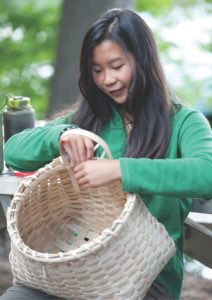 Activity 1: Learning to Look—Wabanaki Baskets (35 minutes)
Activity 1: Learning to Look—Wabanaki Baskets (35 minutes)
- Learning to Look Lesson: Wabanaki Basket page (Hood Museum, Dartmouth website)
- Video: Sustainable Maine, Basket Trees: Saving a Tradition page (MPBN website)
Start by watching the first five minutes of the MPBN documentary, Basket Trees: Saving a Tradition. Stop the documentary at 5:07. Then, open the website above and lead youth in a guided observation, discussion, and interpretation of Wabanaki basketry.
Note: Open the website before meeting with youth. (You may need to open the site with a browser other than Safari.) Read the instructions carefully. Following this lesson step by step, together as a group, will give youth an in-depth understanding of Wabanaki basketry. This resource is very detailed and gives youth an opportunity to think critically through observation, analysis, and interpretation.
Activity 2: Losing Culture and Tradition (25 minutes)
- Take the youth to a place where they can focus. Outside would be ideal.
- Tell youth to relax and take two or three minutes to think about what they value most in life—the things they would not want to live without. Have them think about customs or traditions, religious beliefs, economics (how they make a living), family, community, etc.
- After two or three minutes, give each youth a piece of paper, clipboard, and pencil.
- Then tell them to make a list of the six most important things in their lives.
- Allow youth enough time to write these down.
- Now tell them they need to give up two of these and cross them off the list. Discuss how it felt to do this. Was it hard? Can you imagine life without these things? What would it be like?
- Repeat this procedure and have them cross out two more things. Discuss.
- Now that they have two things left on the list, have them cross out one more. Discuss the following questions:
- Was this exercise difficult? Which thing did you find most difficult to give up?
- What was the one thing you kept? Why did you keep it?
- Now imagine we take that away, too. What would life be like without it?
Reflection Questions (Journal or Discussion)
- Think about the Wabanaki People. What do you think they may have had to cross off their “list” over the years? (MLR: D1-d)
- Why is the ash tree so important to the Wabanaki people? (3-5-MLR)
- How do you think the loss of the ash tree will affect the Wabanaki? (MLR)
- If over the last 100 years, there have been times when 2/3 of the households on Indian Island claimed basket making as their main source of income, then how is EAB going to affect them? (MLR: 6-8 <Economics>)
Supplemental Information:
- Wabanaki culture information: Sustaining Forests, Culturally and Economically Important Nontimber Forest Products of Northern Maine page (USDA website)
- Wabanaki economic impact: Mobilizing to Fight the Emerald Ash Borer (Senator George J. Mitchell Center for Sustainability Solutions website)
- Wabanaki basket activity: Learning to Look Lesson: Wabanaki Basket page (Hood Museum, Dartmouth website)
- The Seven Elements of Culture (Mr. Hyland website)
- Extensions:
- Visit the Abbe Museum to learn more about the Wabanaki Tribes and their traditions. (Abbe Museum website)
- Visit the Maine Indian Basketmaker’s Alliance to find and invite a basket maker to your school or next group meeting. (Maine Indian Baskets website)
Activity 7: What Can We Do?
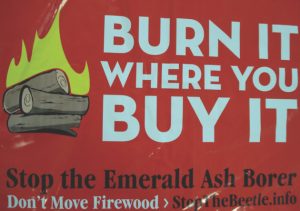
Bugwood.org
The emerald ash borer has killed millions of trees in North America and is spreading rapidly. Local, State, and Federal governments, as well as scientists and private organizations, have collaborated to try to solve this problem, but it is still heading towards Maine. Is there anything we can do to help?
Objectives:
By the end of this activity, youth should understand what has been done to address the EAB problem and what we might do to help.
Time to complete activity: 75 minutes
Background/Setting the Stage:
- In general, how do we solve problems?
- When is the best time to solve a problem?
- What does proactive mean?
Materials:
- LCD projector
- laptop
- DVD, Basket Trees: Saving a Tradition (provided in toolkit)
Methods
Activity 1: What have others done? (30 minutes)
- In order to figure out what we can do, we first need to know what others have done about this problem.
- Play the rest of the Emerald Ash Borer Control video. (You can start from the beginning or where you left off in the same video in Activity 5: Money Talks at 3:54 minutes.)
- Discuss what people could do to solve this problem and list ideas on the board. Here is a list of things they may come up with:
- Prevent the spread by quarantining firewood
- Prevent the spread by quarantining nursery stock
- Kill EAB with chemicals
- Kill EAB by burning all the ash trees
- Kill EAB by introducing a parasite or predator
- Discuss the difference between prevention and triage.
- Categorize the list youth generated into prevention and triage categories to further reinforce the difference between the two.
- Compare and contrast the EAB situation in Michigan and Maine with respect to prevention and triage.
Activity 2: Basket Trees (45 minutes)
- Watch from 13:50 to 25:20 of the video, Sustainable Maine, Basket Trees: Saving a Tradition page (MPBN website)
- Tell youth to listen for things that connect to what they’ve already learned. (Pause the movie to talk about these connections if time allows.)
- Tell youth to list the different methods people are using to try to prevent EAB from spreading into Maine. (Ban on importing firewood, a survey of campground users to see if they’ve heard of EAB, detection methods, emergency response plan, seed collection)
- After watching the documentary, pose the following questions to youth:
- Of all these methods, which do you think is the most forward thinking or proactive? Discuss.
- Officials have brought many different stakeholders together to solve this problem. How does having more people on board help to solve problems in general?
- Now discuss what youth can do to help with this problem. Different groups of youth could come up with different ideas, which could be acted upon in later lessons. Here are some examples:
- Make a group Powerpoint presentation for the town, highlighting things we can do. (Refer to the “Green Menace” site below.)
- Make posters about not moving firewood and post them in your town.
- Pass out bumper magnets: “Don’t move firewood, it bugs me!”
- Write letters to your state representatives.
Reflection Questions (Journal or Discussion)
- What do you think is the most helpful thing people have done to prevent EAB from attacking trees in Maine? Explain your thinking. (3-5-ETS1-2, MS-ETS1-1)
Supplemental Information:
- Emerald Ash Borer, The Green Menace brochure (PDF)
- Sustaining Maine’s Brown Ash Resource (scroll down the Faculty Articles page, UMaine Native American Programs website)
- Emerald Ash Borer Information Network website
- Extensions:
- Conduct a mock town meeting. Divide the group up into various stakeholders, such as Wabanaki tribe members, hiking club members, tree trimmers, large landowners, cabinet makers, town officials, school board members, and the like. You must come to a decision as to whether or not trees will be treated or removed. Should the town help private homeowners pay for treatment/removal? Are there other things our town can do?
- Write a short letter as if you were the town superintendent explaining to your constituents why taxes will rise due to EAB.
- Recommendations for the Collection, Storage, and Germination of Ash (Fraxinus SPP.) Seed (PDF) (UMaine Native American Programs website)

 This activity is supported by National Science Foundation award #EPS-0904155 to Maine EPSCoR at the University of Maine.
This activity is supported by National Science Foundation award #EPS-0904155 to Maine EPSCoR at the University of Maine.

